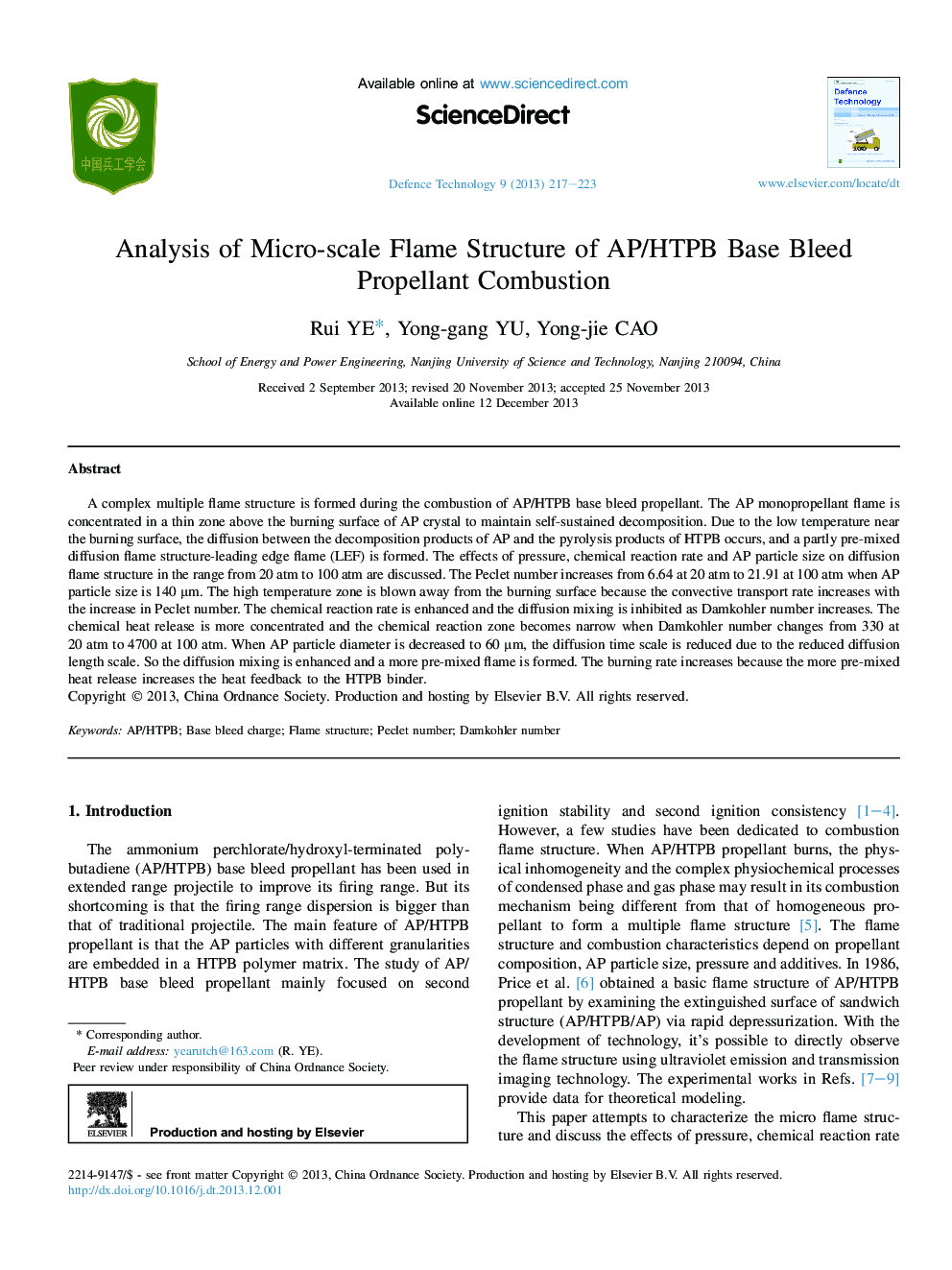| کد مقاله | کد نشریه | سال انتشار | مقاله انگلیسی | نسخه تمام متن |
|---|---|---|---|---|
| 764766 | 897002 | 2013 | 7 صفحه PDF | دانلود رایگان |

A complex multiple flame structure is formed during the combustion of AP/HTPB base bleed propellant. The AP monopropellant flame is concentrated in a thin zone above the burning surface of AP crystal to maintain self-sustained decomposition. Due to the low temperature near the burning surface, the diffusion between the decomposition products of AP and the pyrolysis products of HTPB occurs, and a partly pre-mixed diffusion flame structure-leading edge flame (LEF) is formed. The effects of pressure, chemical reaction rate and AP particle size on diffusion flame structure in the range from 20 atm to 100 atm are discussed. The Peclet number increases from 6.64 at 20 atm to 21.91 at 100 atm when AP particle size is 140 μm. The high temperature zone is blown away from the burning surface because the convective transport rate increases with the increase in Peclet number. The chemical reaction rate is enhanced and the diffusion mixing is inhibited as Damkohler number increases. The chemical heat release is more concentrated and the chemical reaction zone becomes narrow when Damkohler number changes from 330 at 20 atm to 4700 at 100 atm. When AP particle diameter is decreased to 60 μm, the diffusion time scale is reduced due to the reduced diffusion length scale. So the diffusion mixing is enhanced and a more pre-mixed flame is formed. The burning rate increases because the more pre-mixed heat release increases the heat feedback to the HTPB binder.
Journal: Defence Technology - Volume 9, Issue 4, December 2013, Pages 217–223